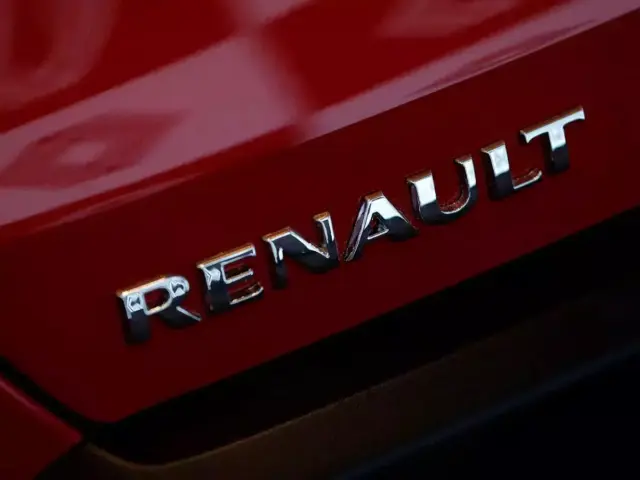
In a move that has sent ripples through the Indian automotive sector, French auto giant Renault Group announced today that it has acquired 100% ownership of its Indian manufacturing joint venture, Renault Nissan Automotive India Private Ltd (RNAIPL). This significant development comes as Renault buys out the 51% stake previously held by its long-standing alliance partner, Nissan. The transaction, expected to be finalized by the end of the first half of 2025, marks a pivotal moment for both companies in one of the world’s most dynamic automotive markets. But what exactly does this mean for car buyers and the future of these brands in India? Let’s break down this game-changing announcement.
For years, the Renault-Nissan alliance has been a familiar sight in India, with their joint manufacturing facility in Chennai serving as a crucial hub for producing a range of popular vehicles. Models like the Renault Kwid, Triber, and Kiger, alongside Nissan’s Magnite and the recently introduced X-Trail, have rolled off the assembly lines of RNAIPL, catering to diverse segments of the Indian car market. This partnership, however, is now entering a new phase, one where Renault will have complete operational control over the manufacturing arm.
Why the Big Shift?
While the financial details of the acquisition remain undisclosed, the strategic rationale behind this move is becoming clearer. For Renault, this acquisition presents a golden opportunity to aggressively pursue its “2027 International Game Plan.” Luca de Meo, CEO of Renault Group, emphasized the significance of this step, stating, “This project represents a key opportunity for Renault to expand its international business. India is a key automotive market, and the Renault Group will establish an efficient industrial footprint and ecosystem.” This suggests that Renault aims to streamline its operations in India, potentially leading to quicker decision-making, greater flexibility in product strategy, and a more focused approach to cater to the specific demands of the Indian consumer.
On the other side of the table, Nissan maintains a strong commitment to the Indian market, albeit with a revised operational structure. Ivan Espinosa, President and CEO of Nissan, reassured stakeholders by saying, “We remain committed to the Indian market, delivering vehicles tailored to local consumer needs while ensuring top-notch sales and service for our existing and future customers. India will remain a hub for our research and development, digital and other knowledge services. Our plans for new SUVs in the India market remain intact.” This indicates that while Nissan is relinquishing its stake in the manufacturing joint venture, it is not exiting India. Instead, the company seems to be adopting a strategy that allows it to focus on strengthening its brand presence, expanding its market coverage, and leveraging India’s talent pool for its global operations.
What Happens to Your Favorite Nissan?
One of the immediate questions that might pop into the minds of current and prospective Nissan owners is: what happens to the production of Nissan vehicles? The good news is that RNAIPL will continue to manufacture Nissan models, including the popular New Nissan Magnite. This ensures that the supply chain for existing models remains intact, and future Nissan vehicles intended for the Indian market will still be produced at the Chennai facility. This arrangement is formalized through an “Operational Agreement” between Renault and Nissan, outlining their future relationship in India. Nissan will also continue to use RNAIPL as a crucial sourcing hub for both domestic sales and exports in the coming years.
A New Twingo on the Horizon – Developed by Renault, Designed by Nissan
Adding an intriguing dimension to this evolving partnership is the announcement that Renault, through its electric vehicle arm, Ampere, will develop and produce a derivative of the iconic Renault Twingo for Nissan, starting in 2026. Interestingly, this new A-segment vehicle will be designed by Nissan. This collaboration highlights the continued synergy within the Renault-Nissan-Mitsubishi Alliance, even as their operational structures in India undergo changes. It suggests that the alliance will continue to leverage each other’s strengths in specific areas, with Renault focusing on manufacturing prowess and Nissan on design and potentially market-specific adaptations.
More Flexibility in the Global Alliance
Beyond the Indian context, this announcement also includes amendments to the overarching “New Alliance Agreement” between Renault and Nissan. The key change involves increasing the flexibility of each party concerning their cross-shareholdings. The lock-up commitment for both companies will be reduced from 15% to 10%. This means that both Renault and Nissan will have the option, but not the obligation, to lower their respective shareholdings to a minimum of 10%. This move signals a desire for greater autonomy and agility within the alliance, allowing each company to pursue its strategic objectives with more freedom. In a related development, Nissan will also be released from its commitment to invest in Ampere, Renault’s electric vehicle venture.
What Does This Mean for Indian Car Buyers?
For the average Indian car buyer, this development could translate into several potential benefits. Renault’s complete ownership of the manufacturing plant might lead to a more aggressive product strategy, potentially bringing new and exciting models to the market faster. With a more streamlined operation, Renault could also focus on enhancing the ownership experience through improved after-sales service and customer engagement.
Nissan’s continued commitment to India, with a focus on increasing market coverage and introducing new SUVs, also bodes well for consumers. The collaboration on the new Twingo derivative could potentially bring a stylish and affordable A-segment vehicle to the market, catering to a significant portion of Indian buyers.
The fact that both companies will continue to jointly operate the Renault Nissan Technology & Business Center India (RNTBCI) in Chennai, with Renault holding a 51% stake and Nissan a 49% stake, is also significant. This center plays a crucial role in research and development, suggesting that both companies will continue to invest in developing technologies and products relevant to the Indian market.
A Year of Investment and Future Growth
Renault has indicated that 2025 will be a year of peak investments for RNAIPL, aligning with the launch of new vehicles. This commitment suggests a strong belief in the growth potential of the Indian market and a willingness to invest in the future. The company anticipates a free cash flow impact of around €200 million in 2025, taking into account the completion of the transaction by the end of the first half of the year.
The Road Ahead
The complete acquisition of RNAIPL by Renault marks a significant turning point in the Renault-Nissan alliance’s journey in India. While the manufacturing operations will now be under Renault’s sole control, the strategic partnership between the two companies remains intact, with continued collaboration on technology, product development, and even specific vehicle projects.
For Indian consumers, this development promises an exciting future with the potential for new models, enhanced services, and a continued commitment from both Renault and Nissan to cater to their evolving needs and preferences. The road ahead might look slightly different, but the destination for both these global automotive players in the Indian market remains firmly set on growth and expansion. Keep an eye out for the new developments as Renault takes the wheel and Nissan charts its own focused path in the vibrant Indian automotive landscape.


















